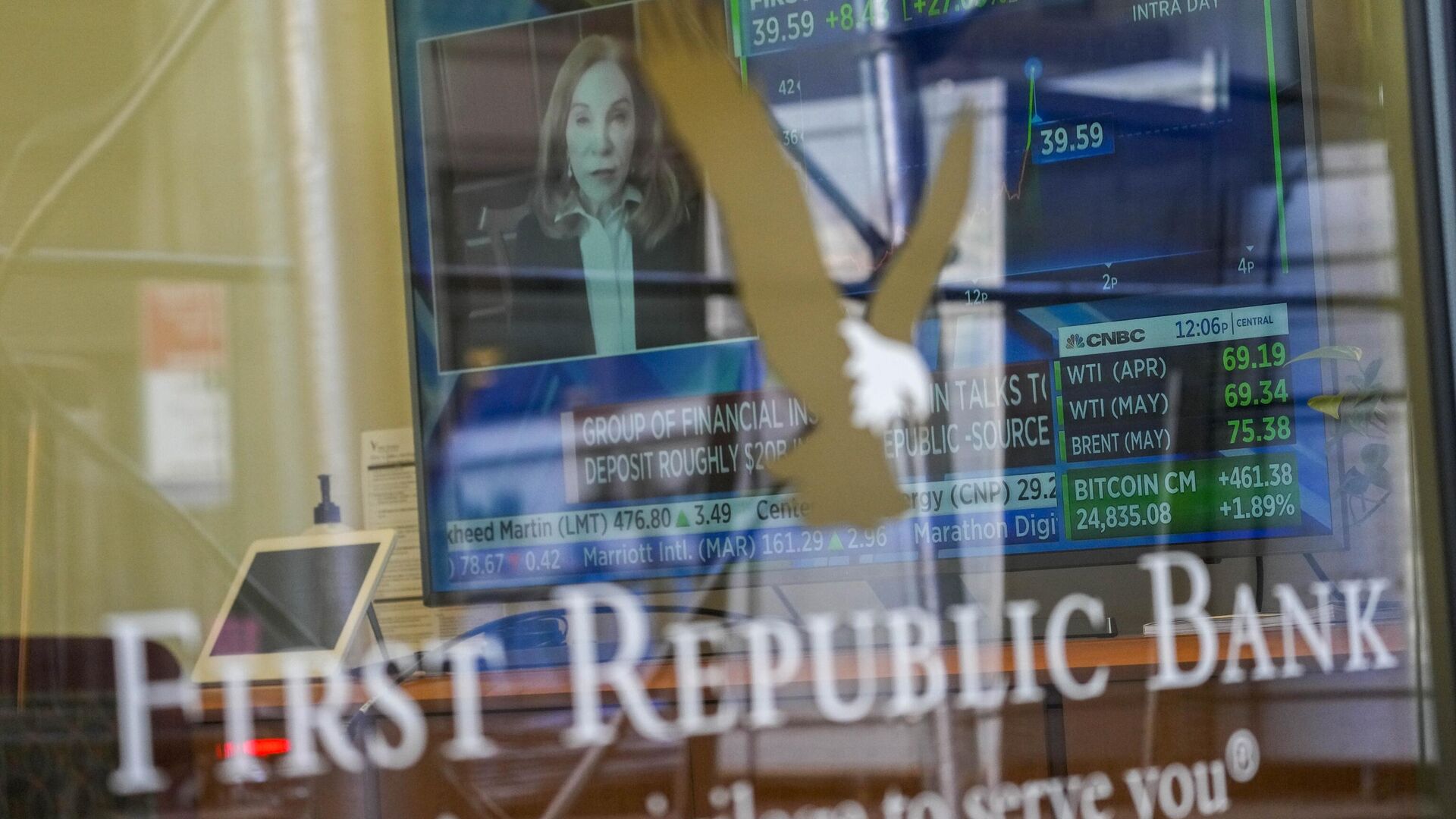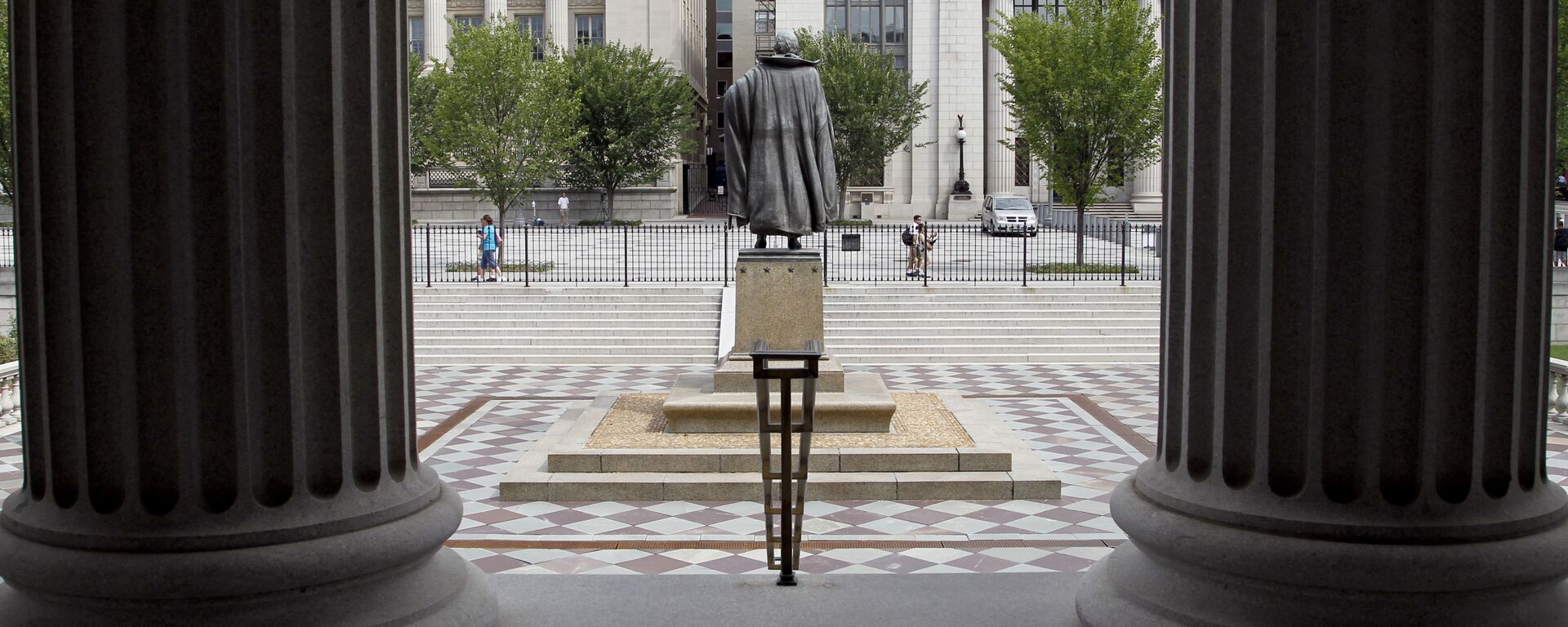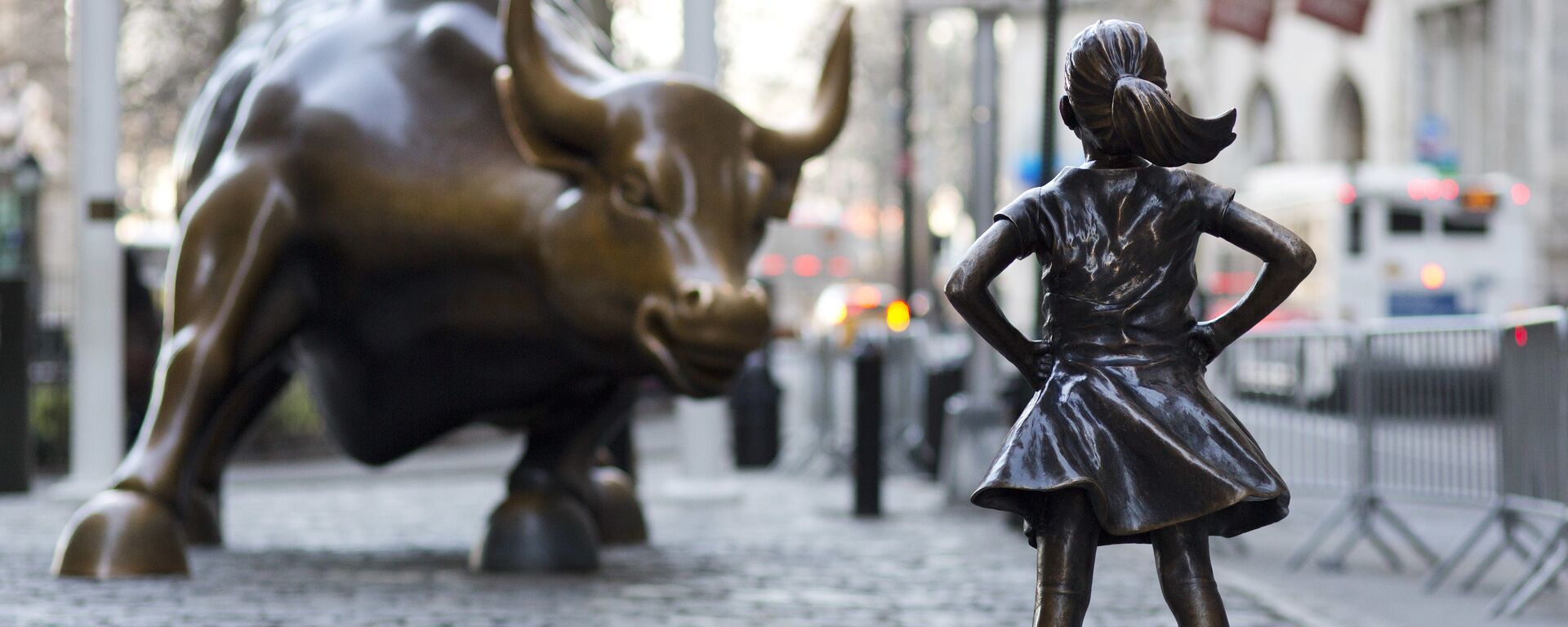https://sputnikglobe.com/20230503/ongoing-us-banking-crisis-evokes-strong-memories-of-2008-1110054952.html
Ongoing US Banking Crisis Evokes Strong Memories of 2008
Ongoing US Banking Crisis Evokes Strong Memories of 2008
Sputnik International
The acquisition of First Republic Bank merely provided a "backstop" but not a solution to the US banking crisis that was facilitated by the Federal Reserve's continuing interest rate hikes, Sergio Rossi, professor of macroeconomics and monetary economics at the University of Fribourg, Switzerland, told Sputnik.
2023-05-03T12:45+0000
2023-05-03T12:45+0000
2023-05-03T13:33+0000
analysis
us
opinion
first republic bank
federal reserve
silicon valley
washington
silicon valley bank collapse
silicon valley bank
signature bank
https://cdn1.img.sputnikglobe.com/img/07e7/04/19/1109808217_0:160:3072:1888_1920x0_80_0_0_de3257c25c412bbca412204ef8c655e9.jpg
US financial regulators seized First Republic Bank on Monday and sold it to Wall Street behemoth JPMorgan Chase, ending a weeks-long agony of the lender. First Republic initially saw its shares plummeting in March after the spectacular collapse of the Silicon Valley and Signature banks. Despite measures taken by Wall Street giants and government regulators, the San-Francisco-headquartered bank went down in flames. Even though First Republic Bank's acquisition temporarily calmed the markets, the US press has warned that the crisis has not necessarily been averted, a view shared by Swiss professor of macroeconomics and monetary economics Sergio Rossi.The collapse of US regional banks, including the SVB, Signature and First Republic Banks, triggered fears of a repetition of the 2007-2008 crisis that led to recession. The US press has drawn attention to the fact that the three aforementioned lenders held a total of $532 billion in assets which - after adjusting to inflation - is more than the $526 billion held by the 25 banks that collapsed in 2008. Fifteen years ago the domino effect triggered by the collapse of the largest savings and loan association Washington Mutual, as well as investment banks Lehman Brothers and Bear Stearns, led to the failure of a whopping 500 federally-insured banks between 2008 and 2015. Meanwhile, a March 2023 study published on the Social Science Research Network suggested that nearly 200 US banks could be vulnerable to the same type of risk that took down SVB, Signature Bank, and, most recently, First Republic Bank. Is the US on the verge of a new big crisis?Meanwhile, another problem is unfolding in the US property market, as experts report a five year minimum demand for commercial real estate with landlords unable to repay mortgages due to empty spaces. This again draws on the events of the 2008 crisis, when it all began from the collapse of the real estate market. Another similarity, as per Rossi, is that banks and non-bank financial institutions have been issuing financial assets based on these mortgage loans, thereby shifting the risk that the mortgage holders were not in a position to repay their debt on the buyers of these assets. Now, the Federal Reserve has doubled down on increasing interest rates – in order to curb inflation – knocking out financial institutions which heavily relied on interest rate-sensitive instruments, including Treasury bonds and US government agency mortgage-backed securities. The Fed is expected to further raise interest rates on May 3 and, potentially, signal a pause in its 14-month tightening cycle in order to mitigate the banking crisis risk. According to Rossi, further hikes could further misbalance the situation and backfire on the global economy.For more of Sergio Rossi's exclusive analysis on the US banking crisis, check out our Telegram post here.
https://sputnikglobe.com/20230427/first-republic-bank-going-down-in-flames-hints-at-further-trouble-1109895599.html
https://sputnikglobe.com/20230502/a-us-default-would-cause-systemic-financial-crisis-destabilize-global-economy-1110038307.html
silicon valley
washington
Sputnik International
feedback@sputniknews.com
+74956456601
MIA „Rossiya Segodnya“
2023
News
en_EN
Sputnik International
feedback@sputniknews.com
+74956456601
MIA „Rossiya Segodnya“
Sputnik International
feedback@sputniknews.com
+74956456601
MIA „Rossiya Segodnya“
us banking crisis, first republic bank collapse, silicon valley bank collapse, signature bank collapse, federal reserve interest rate hikes, federal reserve inflation, interest rate sensitive government bonds, global financial crisis of 2008, us economic crisis
us banking crisis, first republic bank collapse, silicon valley bank collapse, signature bank collapse, federal reserve interest rate hikes, federal reserve inflation, interest rate sensitive government bonds, global financial crisis of 2008, us economic crisis
Ongoing US Banking Crisis Evokes Strong Memories of 2008
12:45 GMT 03.05.2023 (Updated: 13:33 GMT 03.05.2023) The acquisition of First Republic Bank merely provided a "backstop" but not a solution to the US banking crisis that was facilitated by the Federal Reserve's continuing interest rate hikes, Sergio Rossi, professor of macroeconomics and monetary economics at the University of Fribourg, Switzerland, told Sputnik.
US financial regulators seized First Republic Bank on Monday and sold it to Wall Street behemoth JPMorgan Chase, ending a weeks-long agony of the lender.
First Republic initially
saw its shares plummeting in March after the spectacular collapse of the Silicon Valley and Signature banks. Despite measures taken by Wall Street giants and government regulators, the San-Francisco-headquartered
bank went down in flames.
Even though First Republic Bank's acquisition temporarily calmed the markets, the US press has warned that the crisis has not necessarily been averted, a view shared by Swiss professor of macroeconomics and monetary economics Sergio Rossi.
"Such an acquisition just provided a backstop, but not certainly the solution to the US banking crisis, particularly since the latter has burst as a result of the interest rate hikes decided by the Federal Reserve in an attempt to curb inflationary pressures," said Rossi. "In so far as this monetary policy tightening continues in the next months, there will be different other banks experiencing financial troubles, and for sure JP Morgan will not – and cannot – bail them all out. A public sector intervention will be necessary in this regard."
The collapse of US regional banks, including the SVB, Signature and First Republic Banks, triggered fears of a repetition of the 2007-2008 crisis that led to recession.
The US press has drawn attention to the fact that the three aforementioned lenders held a total of $532 billion in assets which - after adjusting to inflation - is more than the $526 billion held by the 25 banks that collapsed in 2008.
Fifteen years ago the domino effect triggered by the collapse of the largest savings and loan association Washington Mutual, as well as investment banks Lehman Brothers and Bear Stearns, led to the failure of a whopping 500 federally-insured banks between 2008 and 2015.
Meanwhile, a March 2023 study published on the Social Science Research Network suggested that nearly 200 US banks could be vulnerable to the same type of risk that took down SVB, Signature Bank, and, most recently, First Republic Bank. Is the US on the verge of a new big crisis?
The US is not really out of the subprime crisis yet, and now another systemic financial crisis is looming, owing to both the strategic speculations of financial institutions and a wrongly-designed financial regulation, both in the US and at the international level. The US is thereby on the verge of a new systemic financial crisis, owing to a series of factors in their own national economy, as well as in the global economy. Financial capitalism is an economic system that induces such a crisis to occur for a number of endogenous reasons that have to do with the possibility to privatize the profits and socialize the losses, when a systemically-relevant financial institution is close to bankruptcy.
Sergio Rossi
Professor of macroeconomics and monetary economics at the University of Fribourg, Switzerland,
Meanwhile, another problem is unfolding in the US property market, as experts report a five year minimum demand for commercial real estate with landlords unable to repay mortgages due to empty spaces. This again draws on the events of the 2008 crisis, when it all began from the collapse of the real estate market.
Rossi agreed that there are some similarities, particularly as regards the huge volume of mortgage loans that banks have been providing during the past years. In this time, interest rates have been very low as a result of the Federal Reserve’s very expansionary monetary policy, to address a series of negative consequences resulting from the "subprime crisis." Then, however, it was a residential real estate crisis, "whilst now the problem concerns first and foremost empty commercial spaces, that is, firms and not individual homeowners," remarked the economic expert.
Another similarity, as per Rossi, is that banks and non-bank financial institutions have been issuing financial assets based on these mortgage loans, thereby shifting the risk that the mortgage holders were not in a position to repay their debt on the buyers of these assets.
Now, the Federal Reserve has doubled down on increasing interest rates – in order to curb inflation – knocking out financial institutions which heavily relied on interest rate-sensitive instruments, including Treasury bonds and US government agency mortgage-backed securities. The Fed is expected to
further raise interest rates on May 3 and, potentially, signal a pause in its 14-month tightening cycle in order to mitigate the banking crisis risk. According to Rossi, further hikes could further misbalance the situation
and backfire on the global economy.
"An increasing number of banks in the US and in other so-called ‘advanced’ economies, notably in Europe, will suffer from a lack of trust by their shareholders as well as their depositors, which could precipitate a bank run that will push a number of banks close to bankruptcy. Moreover, such a decision to increase the policy rates of interest further will not curb inflationary pressures. The latter do not originate on the demand side but on the supply side of the market for produced goods and services, also as a result of some firms increasing their markup, hence their profits, by exploiting to their own short-run advantage the energy crisis that currently affects the global economy for geopolitical reasons," Rossi concluded.
For more of Sergio Rossi's exclusive analysis on the US banking crisis, check out our Telegram post here. 



